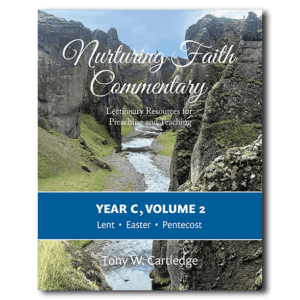
I applied to rabbinical school over 20 years ago.
When asked to share a favorite piece of rabbinic literature, I decided to teach a text where the ancient rabbis “imagined” what biblical Sarah was doing during the binding of Isaac.
I wanted to show that it is important to add voices of women in the Torah, even if their voices weren’t always explicitly shared.
One of the committee members responded by saying, “I think you have gender issues.” He was right.
I might not have liked that description as a 21-year-old woman, but the fact is, I did and do find challenges in our texts, rituals and liturgy.
My approach to this challenge, as a Jewish feminist, isn’t to reject it because of those issues, rather it is to study it, adapt it and add my voice to this ancient tradition as a rabbi myself.
For me, and for others, to engage thoughtfully and with intellectual integrity with the text, we need to think about the context of these conversations.
For millennia, Jewish women didn’t have the same access, at least not publicly, to Jewish texts and rituals, but over the past century, there has been an incredible change.
One hundred years ago this March, the first Bat Mitzvah took place in the United States, a ritual that is now as common as a Bar Mitzvah for young people who are coming of age, especially in the non-orthodox movements.
Fifty years ago, the Reform movement in the United States ordained its first rabbi who was a woman with the other denominations following, including the ordination of female Orthodox rabbis in the last decade.
Over these years, there have been successful attempts at understanding the role and the voice of women in sacred texts.
In this month of March, we will celebrate the holiday of Purim where we elevate biblical Esther, the woman who used her power, her voice and, of course more complicated, her body, to have an influence over a foolish leader to save the Jewish people.
That isn’t the only place in sacred literature that women’s stories can be seen, but how we share these stories has changed. Are they concealed or revealed?
The role of women in our Bible is one area where there has been growth. As we think about the role of women in the Bible, there are two very different images that can be painted.
We can choose to read the women as having agency, making choices that impacted their future and the future of the Jewish people, or we can choose to see women as being secondary, often voiceless, actors in a narrative that is happening to them and about them. I choose to see both.
There is the image of each of the matriarchs – Sarah, Rebecca, Rachel and Leah – who each took it upon themselves, both overtly and covertly, to mastermind the nature of progeny in a way that the “correct” seed would be a part of the Jewish nation.
We know that it was Sarah who expelled Hagar. We know it was Rebecca who convinced Jacob to trick his father Isaac into gaining the blessing of the firstborn. We know that it was Miriam who led the people, with Moses, across the sea of reeds.
But we also know that it was Dinah who was assaulted, and yet her voice was never heard. We know that laws were written about women, not for women, that often, especially in the laws of divorce, put women at a disadvantage.
And we have stories such as the daughters of Tzelofchad, who, when they realized that they were the sole heirs to their father’s property, refused to let their inheritance go to men, and they petitioned Moses (and therefore God) for a moment of advocacy and evolution.
In reading texts today as 21st-century feminists, I believe that we should realize that this isn’t an either/or approach but rather a yes/and. We must build on what is good and challenge what is problematic.
Many of us integrate the matriarchs into our prayers, including the daughters of the priestly class, in our religious services, and create rituals that emulate their stories.
It is why we put water in a glass on many seder tables today, to remind ourselves of the water that the Israelites danced through and over and the water that appeared in the form of a well with Miriam.
But as we remember biblical Miriam, we know that her death wasn’t marked as poignantly as her brothers, Aaron and Moses. Compared to those two leaders, Miriam simply faded into the background.
True, we celebrate her beautiful song at the shores of the Red Sea, but even that poem is overshadowed by Moses’ far-lengthier song.
This is really important. It forces us to ask, who haven’t we eulogized? Whose stories haven’t we elevated? How do we elevate people who had a role at some point but weren’t acknowledged then, but we bring them back later?
The Broadway show “Hamilton” is a story about our founding fathers told with new voices and new perspectives. A story in modernity that forces us, in the best of ways, to ask who lives, who dies, who tells your story?
It is a story that tries to balance the traditional past with the modern present in the story that creates a whole narrative, something that the Jewish community can learn from.
It may be too late to change Miriam’s status among her own generation, although many Jewish men and women are now, belatedly, giving her the prominence that her compassion and nurturing deserve.
But it is not too late for our generation to re-examine its own values and its heroes and heroines. The way we do that is by re-examining how stories have been told and adding new voices to them.
March is Women’s History Month, and March 8 is International Women’s Day, but it must be a signal to celebrate women not only on these annual observances, but also as we move through the days, weeks and years ahead, all of us are sharing the voices, past and present, that have had an impact on our traditions and our communities.
Editor’s note: This article is part of a series for International Women’s Day (March 8). The other articles published to date are:
Why Do Human Views of Women Differ from the Divine? | Sahar Alsahlani
Say Her Name – Remembering Women Outside the History Books | Chris Smith
Why I Didn’t Celebrate International Women’s Day Growing Up | Lina Toth




